It’s no secret that our curious feline friends can get themselves into some sticky situations – and that includes nibbling on things they shouldn’t, like styrofoam.
While styrofoam is a popular and practical material used for packaging and insulation, it’s also a significant health hazard for cats if ingested.
Even if we try our best to keep our pets away from harmful household items, accidents can still happen.
But, fear not. In this blog post, I’ll guide you through the necessary steps to take if your kitty has eaten styrofoam.
First off, let’s discuss why it’s critical to act fast and the potential dangers of styrofoam consumption for your feline friend.
Next week, we’ll delve into the tell-tale signs of gastrointestinal distress to look out for.
Then, I’ll share actionable tips on what to do next, including whether to contact your vet and which medications can help.
So, if your cat has chomped on some styrofoam, don’t freak out just yet.
This blog post will equip you with the knowledge and tools you need to ensure your fur baby’s safety and wellbeing.
So, let’s get started.
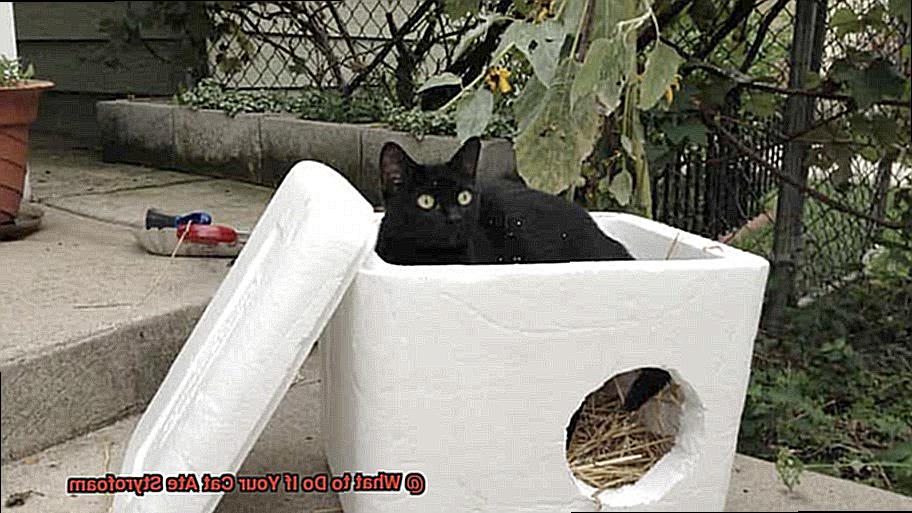
Signs and symptoms of Styrofoam ingestion in cats
One such hazard is Styrofoam, which is often used as packaging material for various items.
But did you know that cats can be seriously affected by ingesting even small pieces of Styrofoam? In today’s blog post, we’ll delve deeper into the signs and symptoms of Styrofoam ingestion in cats and what you can do to keep your furry friend safe.
Let’s start with the basics – what are the common signs your cat has ingested Styrofoam? One of the most apparent and often first indicators is vomiting.
You’ll notice your cat throwing up and may even see pieces of Styrofoam in their vomit.
Other symptoms include diarrhea, bloating, and abdominal pain.
In more severe cases, ingesting Styrofoam can make your cat lethargic or disoriented.

These symptoms could mean that your cat is experiencing discomfort or pain.
If you suspect your cat has been chewing on or eating Styrofoam, don’t hesitate to take action.
Watch your furry friend closely for any abnormal behavior, such as refusal to eat or difficulty passing stool.
It’s essential to take them to the vet as soon as possible, especially if they exhibit any symptoms of blockage.
Your veterinarian may suggest inducing vomiting to bring up any Styrofoam, or running an x-ray to determine if there’s an obstruction.
If they find a blockage, your cat may require surgery to remove it.
While accidents happen, it’s always better to prevent them, especially when it comes to your cat’s health.
Be mindful of where you keep Styrofoam and other harmful materials.
Curious cats may try to play with and bite these items, and inadvertently ingest them.

So, it’s better to keep these materials out of reach or in a closed container to avoid any chances of ingestion.
Why do cats eat Styrofoam?
As much as we try to keep our cats safe, accidents do happen, and it’s essential to understand why our pets do what they do.

Here, we will delve into the reasons that may cause cats to chew on Styrofoam.
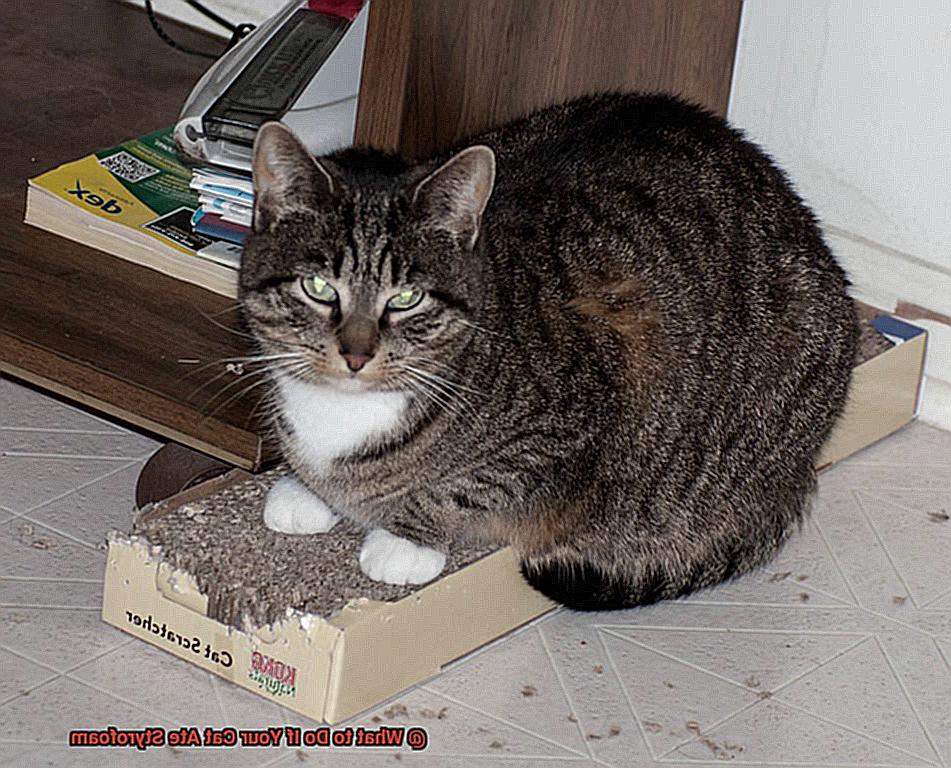
Firstly, cats with pica, a behavioral disorder, are inclined to eat non-food items, including Styrofoam, rubber bands, and paper.
Experts believe that pica is often brought on by stress, anxiety, or boredom, and sometimes even caused by an underlying health condition like anemia.
If you’ve observed your cat nibbling on Styrofoam, keep an eye out for signs of anxiety, stress, or boredom that may lead to pica.
Secondly, nutritional deficiencies could be a potential reason why cats may eat Styrofoam.
Some experts suggest that cats may chew on Styrofoam to obtain essential nutrients that they are not getting from their food, such as fiber that aids digestion.
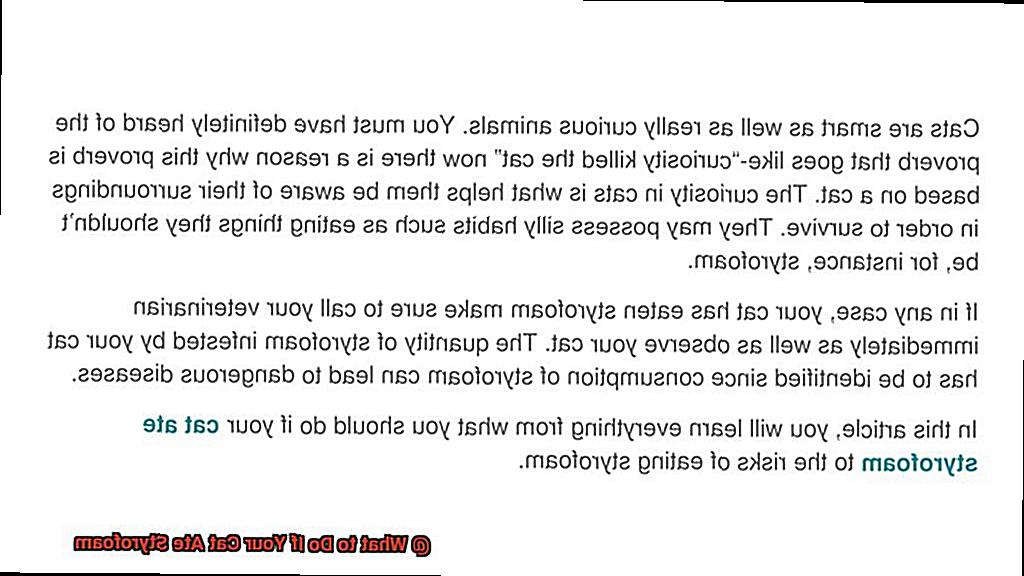
Thus, it is crucial to ensure that our cats’ diets are balanced and that they receive adequate nutrients.
However, it is vital to keep in mind that eating Styrofoam can be detrimental to your cat’s health.

Consuming large quantities of Styrofoam can cause gastrointestinal issues like constipation, vomiting, and diarrhea.
Therefore, as responsible pet owners, it is our responsibility to store Styrofoam and other dangerous substances out of our cat’s reach.
In conclusion, there could be numerous reasons why cats chew on Styrofoam, including behavioral disorders and dietary deficiencies.
Taking excellent care of our cats’ physical and emotional well-being, and their nutritional needs can ensure that our furry friends stay healthy and happy.
The health risks of Styrofoam ingestion in cats
They may love to play with objects like Styrofoam, but did you know that ingesting it can cause serious health concerns? In this blog post, we’ll discuss the potential health risks of Styrofoam ingestion in cats.
Styrofoam, a popular choice for packaging materials, can be attractive to cats due to its unique texture and sound.
However, if swallowed, it can lead to blockages in the digestive system, resulting in vomiting, diarrhea, and abdominal discomfort.
The material is also challenging to break down in the stomach, causing irritation and inflammation of the digestive tract, which can lead to further complications.
While polystyrene, the substance used in Styrofoam, is considered safe in small amounts, larger quantities can cause health problems, such as fatigue, depression, and loss of appetite.
In severe cases, ingestion of Styrofoam can cause life-threatening intestinal blockages, requiring immediate veterinary attention.
Styrofoam peanuts, often used in packing materials, pose an even greater threat to our feline friends.
These small, lightweight pieces can become lodged in a cat’s throat or intestines, causing choking or blockages that may require surgical intervention.
If your cat shows signs of discomfort, such as vomiting or diarrhea, after ingesting Styrofoam, it is essential to monitor them closely for any changes in behavior.

Seek veterinary care right away if you notice any symptoms, as prompt action can be the difference between life and death.
What to do if your cat ate Styrofoam
You may have faced a situation where your curious feline friend ended up munching on some Styrofoam foam.
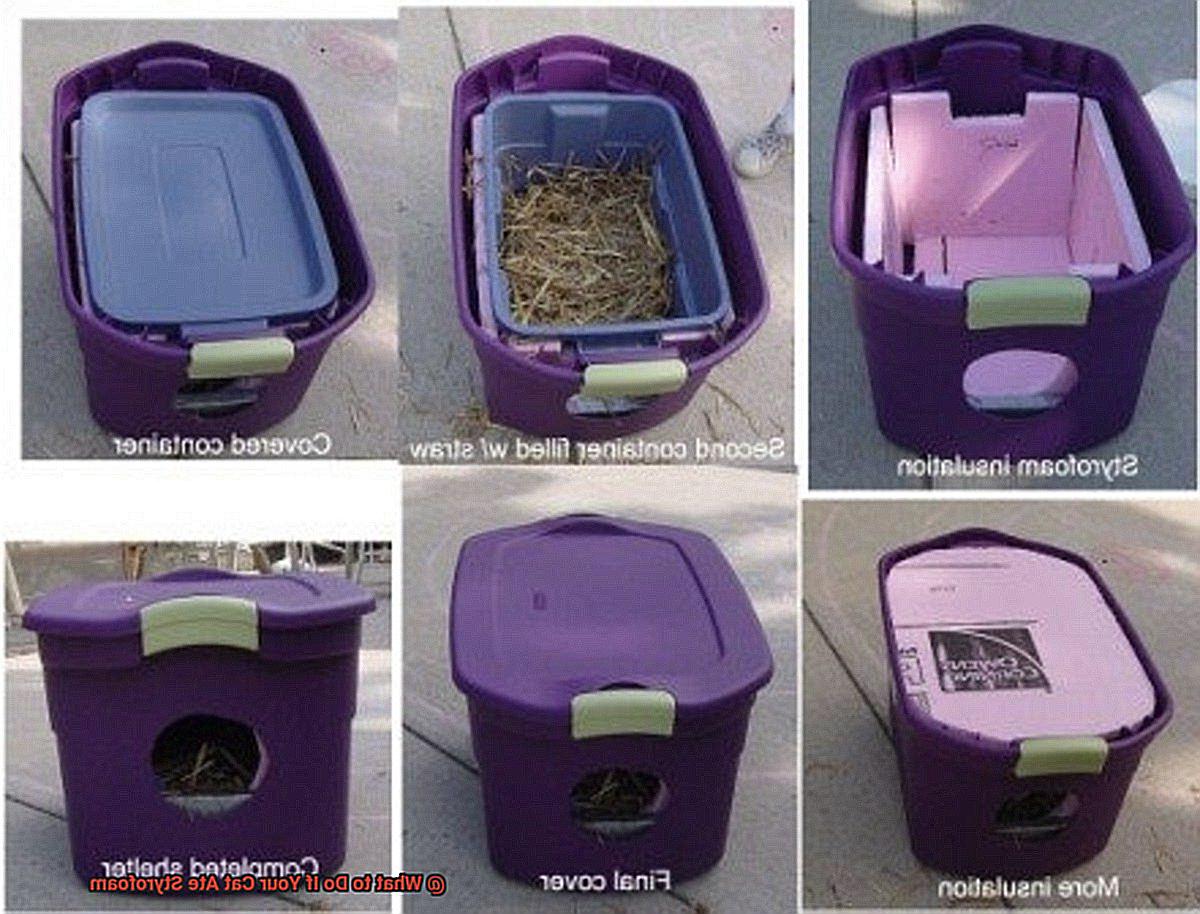
While Styrofoam may seem like a harmless chew toy, it can be dangerous for your cat’s health.
As an expert on this matter, I’m here to provide you with immediate steps to take if your cat ingests Styrofoam foam.
Monitor Your Cat’s Behavior
The first step is to observe your cat’s behavior closely.
Keep an eye out for any unusual symptoms like vomiting, gagging, coughing, or lethargy.

Styrofoam foam can cause blockages in your cat’s digestive system, which can be life-threatening.
So, it’s crucial to act quickly and visit your veterinarian if you notice any of these symptoms.

Induce Vomiting
If your cat seems fine and hasn’t shown any symptoms, the next step is to induce vomiting.
Before you attempt to induce vomiting, it’s best to consult with your veterinarian.
They can advise you on the appropriate dose of hydrogen peroxide to give, based on your cat’s weight and size.
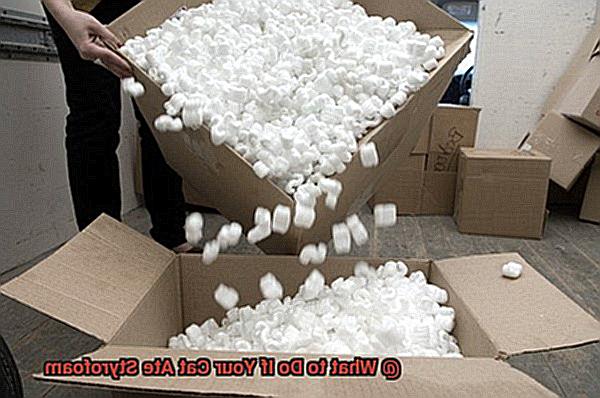
Once you have the correct dosage, administer the hydrogen peroxide and wait for 10 to 15 minutes for your cat to vomit.
If your cat doesn’t vomit or appears to be in distress, don’t hesitate to consult your veterinarian.
Do Not Try Self-medication
It’s essential to note that you should never try to medicate your cat without consulting a veterinarian.
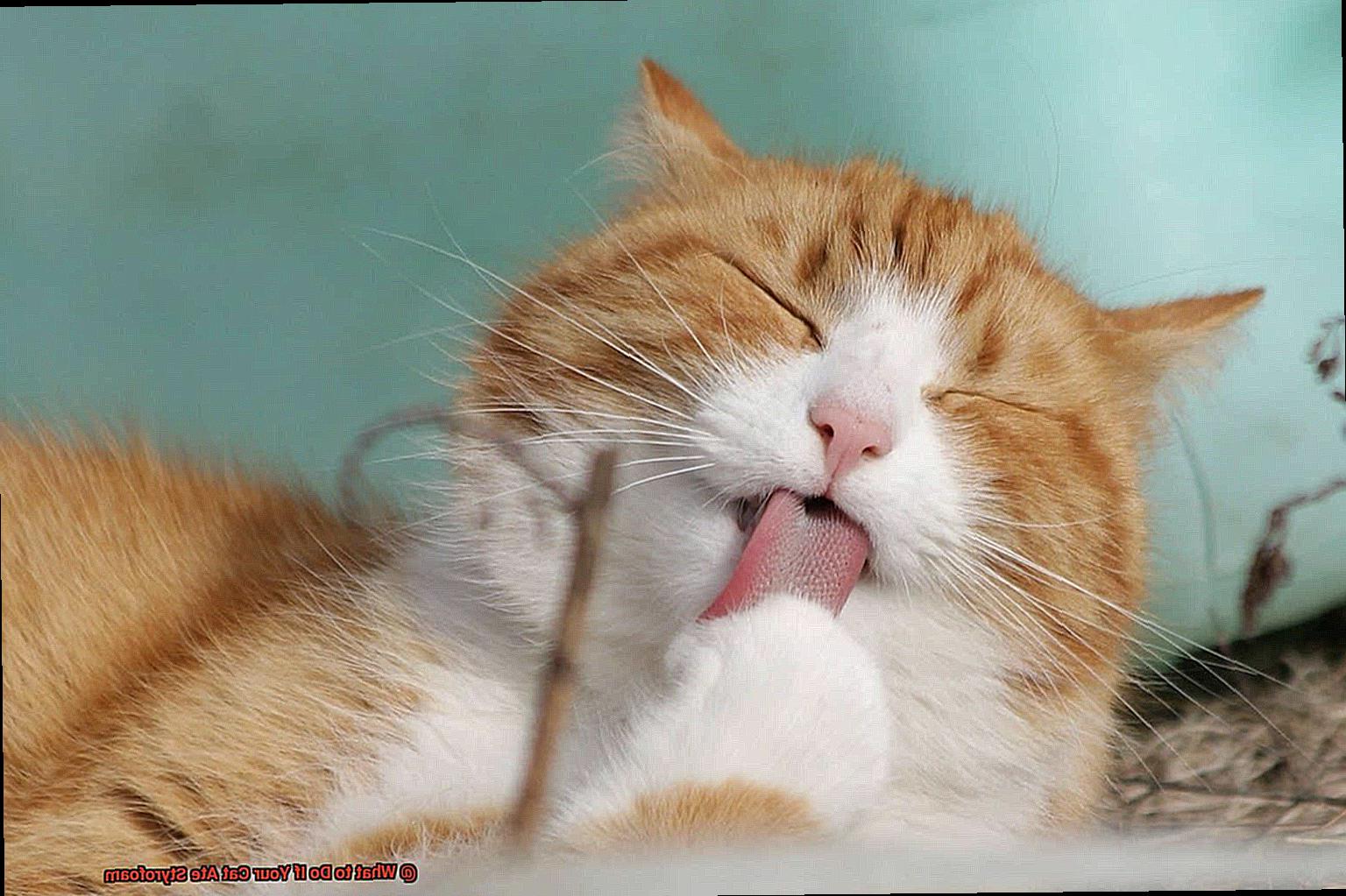
Medications could be lethal for cats if not prescribed according to their needs.
Always seek professional help when it comes to dealing with your cat’s health.
Ensure Proper Treatment from Your Vet
Suppose your cat has ingested a large amount of Styrofoam foam or is experiencing severe blockages.
In that case, you need to visit your vet immediately.
They may recommend treatment such as fluids and medication to aid in the digestion process.
Prevention is Better Than Cure
Prevention is always the best course of action when it comes to your cat’s health.
To prevent any future Styrofoam foam ingestion, keep all Styrofoam containers and items in a safe place, ensure your cat has access to safe and exciting toys, and keep Styrofoam out of reach.
Inducing vomiting in cats
Inducing vomiting in cats may be necessary to remove any harmful elements from their system.
Here, we will provide you with a step-by-step guide on how to induce vomiting in your furry friend, in case of Styrofoam ingestion.
Before trying to induce vomiting in your cat, there are some crucial things to consider.
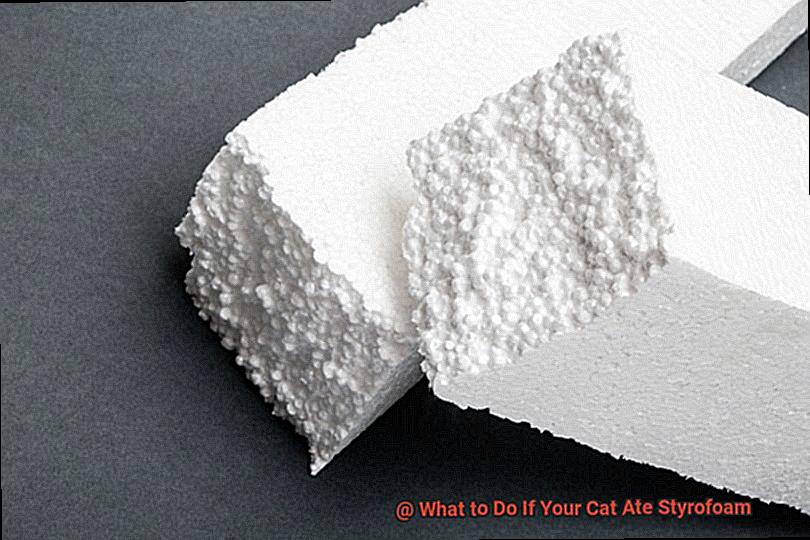
First and foremost, consult with your veterinarian to assess whether inducing vomiting is the best course of action for your cat’s particular situation.
In cases where your cat ingested sharp objects or other dangerous materials, inducing vomiting can cause serious harm.
Assuming your veterinarian has approved the procedure, here is a detailed guide on how to induce vomiting in your cat safely and effectively:
Administer 1 teaspoon (5ml) of 3% hydrogen peroxide per pound of body weight.
You can give it directly into their mouth or mix it into a small amount of food to make it more palatable.
After administering the hydrogen peroxide, make sure to take your cat outside or to an area that is easy to clean to avoid any mess.
The vomiting will likely occur within 10-15 minutes.
While your cat is vomiting, keep an eye on them closely.
If the vomiting persists for more than 15 minutes, contact your veterinarian immediately.
Once your cat has finished vomiting, offer them small sips of water.
Do not give them food until their appetite has returned to normal.
It is essential to note that inducing vomiting should not be done without veterinary approval and supervision.
Please remember to consult with your veterinarian to avoid any accidental harm to your cat.
Stool monitoring
Stool monitoring is one of the critical things you have to do as a cat owner, particularly if they’ve ingested something like Styrofoam.
Styrofoam ingestion can be dangerous for cats, and the following signs can indicate that your cat is in trouble.
First and foremost, you must look for changes in their stool’s consistency or sweet smell.
If their stool is unusually hard or smells strange, there’s a real risk that the Styrofoam might be blocking their digestive tract.
Act fast and consult your vet.
It can be challenging to locate pieces of Styrofoam in your cat’s stool, especially Styrofoam peanuts, which can be tough to see.
Still, it’s important to be extra vigilant and act quickly if you see any bright white pieces resembling Styrofoam in their puke.
If your cat can’t pass the Styrofoam, you may notice them straining or experiencing constipation.
These signs suggest that your cat is dealing with a digestive system blockage, which requires immediate attention from your vet.
Some signs may indicate that your cat is having trouble with Styrofoam ingestion.
For example, they may start vomiting or show other unusual symptoms.
If you notice any weird signs, make sure you contact your vet right away.
To keep your cat healthy and happy, it’s crucial to monitor their stool regularly, particularly if they’ve ingested Styrofoam.
What not to do if your cat ate Styrofoam
One of the most critical mistakes to avoid is inducing vomiting in your cat after they’ve ingested Styrofoam.
It may seem like a quick fix, but it can actually do more harm than good.
Attempts to make your cat regurgitate the Styrofoam by administering hydrogen peroxide or similar vomit-inducing products can result in further damage to their digestive tract.
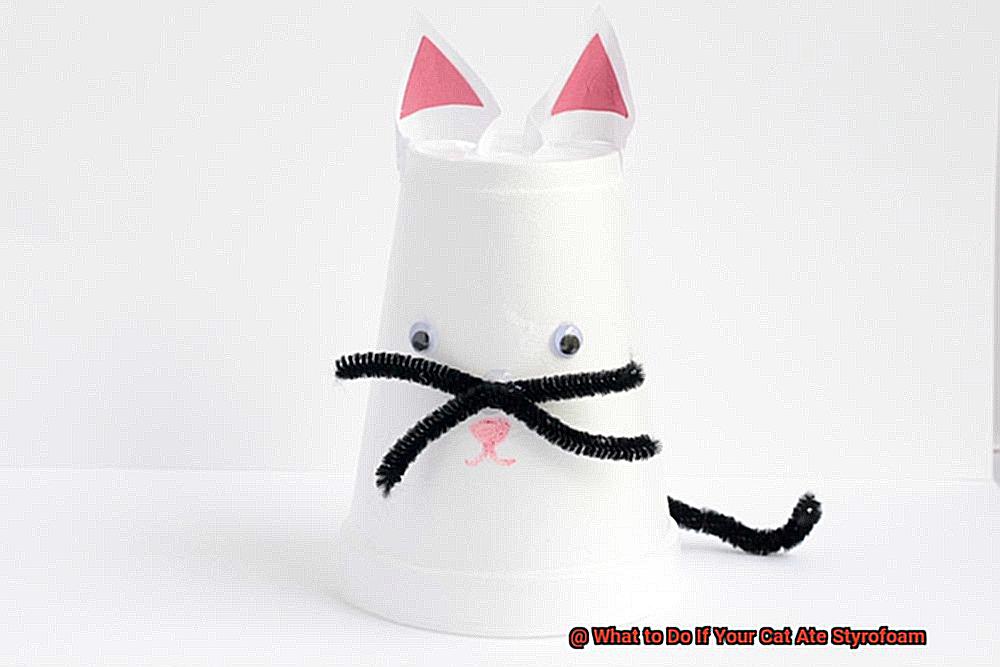
It’s best to seek professional assistance and let a licensed veterinarian handle this delicate situation.
Another mistake cat owners often make is offering food or water immediately after their cat has ingested Styrofoam.
Unfortunately, this could aggravate the situation and cause further blockage in the digestive tract.
Instead, observe your cat’s behavior before offering anything to eat or drink, and let them have time to pass the Styrofoam on their own.
Rinsing out your cat’s mouth may be a tempting course of action, but it, too, can have detrimental effects.
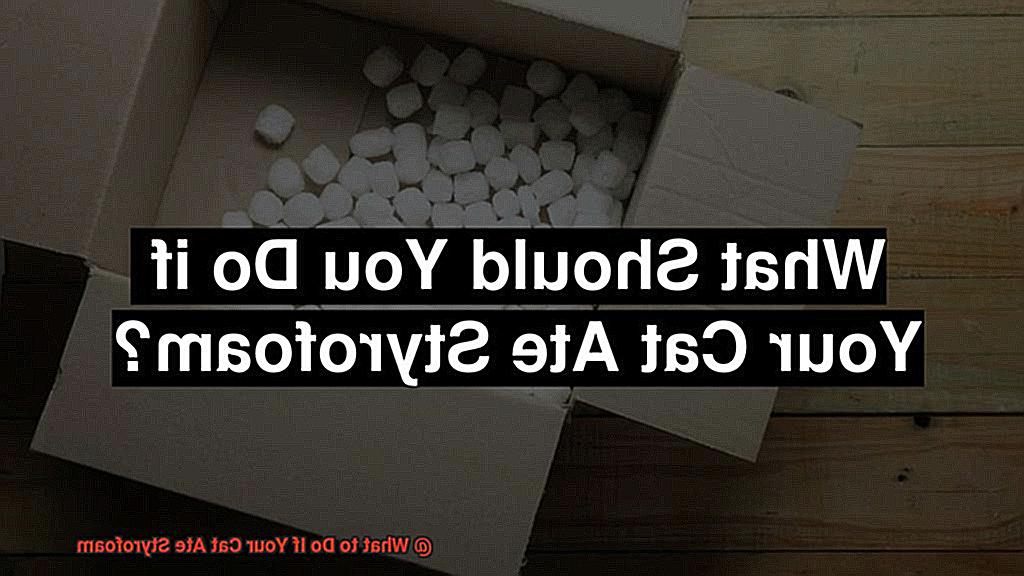
Trying to remove the Styrofoam particles could cause your cat to aspirate or inhale them, further exacerbating the situation.
Allow your cat to ingest the pieces and wait while monitoring their behavior for any signs of distress.
Lastly, never attempt to use over-the-counter medications or home remedies to treat Styrofoam ingestion in your cat.
These treatments can be detrimental to your cat’s health and well-being.
Veterinary expertise is essential in such cases of medical emergencies, and you should always reach out to your trusted animal healthcare provider for assistance.
By avoiding these common mistakes, you can better ensure the safety and wellbeing of your beloved feline friends when dealing with Styrofoam ingestion.
Preventing Styrofoam ingestion in cats
They love to play and investigate everything around them, including Styrofoam.
But did you know that Styrofoam can be extremely dangerous to your furry friend? When ingested, this material can obstruct their digestive tract, cause inflammation, and release toxic chemicals into their bloodstream.
To prevent Styrofoam ingestion in cats, it’s crucial to take some necessary steps.
First and foremost, keep all Styrofoam items out of your cat’s reach.
Foam cups, plates, and packing materials are among the culprits.

To discourage your cat from getting their paws on them, you can store them away in a sealed container with a lid.
But don’t stop there. Why not switch to biodegradable packing peanuts or shredded paper instead? These alternatives are much safer for your cat and for the planet.
If you notice that your cat has a tendency to chew on objects, consider offering them safe and tasty toys and treats, like dental chews.
These specially designed chews can satisfy your cat’s natural urge to bite and chew and also promote healthy teeth and gums.
Interactive toys or puzzle feeders can also provide your cat with entertainment and mental stimulation.
It’s also essential to supervise your cat when they’re playing or exploring new objects or environments.
For cats with a history of chewing on non-food items, consider limiting their access to certain parts of the house or using deterrent sprays to discourage them from consuming Styrofoam and other harmful substances.
Ultimately, preventing Styrofoam ingestion in cats requires a combination of awareness, diligence, and responsible pet ownership.
Conclusion
To wrap up, Styrofoam is no joke when it comes to your cat’s health.
As responsible pet parents, it’s up to us to protect our furry friends from any danger that might come their way.
Keep an eye on your cat’s behavior and take swift action if you suspect they’ve swallowed any Styrofoam.
Consider getting professional help to induce vomiting and seek medical attention to ensure your cat’s wellbeing.







